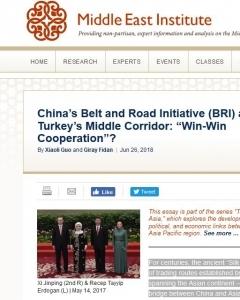
Abstract
For centuries, the ancient “Silk Road” — a network of trading routes established by the Han Dynasty spanning the Asian continent — served as a bridge between China and Asia Minor (modern-day Turkey). In September 2013, President Xi Jinping delivered a long-anticipated speech in which he proposed the idea of reviving the Silk Road. Over the past several years, Xi’s vision has evolved into an elaborate trade and infrastructure strategy now commonly referred to as the Belt and Road Initiative (BRI). Meanwhile, Turkey undertook a proactive policy, later known as “Middle Corridor Initiative,” aiming to set up a transport route from the Anatolia to Central Asia and China.[1] With the completion of the Baku–Tbilisi–Kars railway (BTK) railway link, Turkey has achieved in connecting its national railways to the Trans-Caspian International Transport Route (TITR) — an important part of the China-Turkey-Europe transit corridor — extending from the Caspian Sea to Central Asia and China.